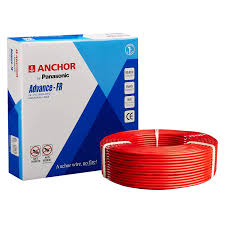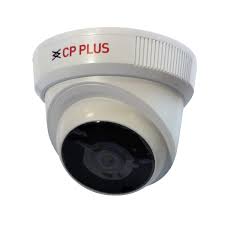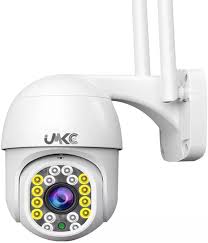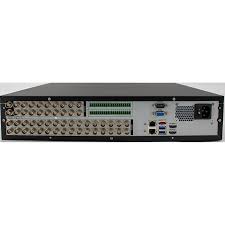Wire is a fundamental component of modern life, playing a crucial role in various industries and everyday applications. From conducting electricity to transmitting data, wire serves as the backbone of many technological advancements and infrastructures.
One of the most common uses of wire is in electrical systems. Copper wire, known for its excellent conductivity, is widely used to carry electrical currents in homes, buildings, and industrial settings. Whether it’s powering lights, appliances, or machinery, electrical wire enables the flow of electricity from its source to the intended destination.
In telecommunications, fiber optic cables have revolutionized the way information is transmitted over long distances. These thin strands of glass or plastic wire can carry vast amounts of data in the form of light pulses, making them essential for high-speed internet connections, telephone networks, and cable television systems.
Wire also plays a critical role in the construction industry. Steel wire ropes are used for lifting heavy loads on construction sites and in elevators. Reinforcement wire mesh provides strength to concrete structures like bridges and buildings, ensuring their durability and stability over time.
For DIY enthusiasts and hobbyists, crafting wire offers endless possibilities for creating jewelry, sculptures, and other artistic creations. Different types of decorative wires come in various colors and gauges, allowing artists to express their creativity through intricate designs and patterns.
In the automotive sector, wiring harnesses are essential components that connect various electrical components in vehicles. These harnesses ensure proper communication between sensors, lights, engines, and other systems within a car or truck.
Overall, wire serves as a versatile material that facilitates connectivity, power distribution, data transmission, and creative expression across a wide range of industries and applications. Its adaptability and reliability make it an indispensable resource in our modern world.
Top 5 Advantages of Using Wire: From Efficient Electricity Transmission to Artistic Creativity
- Excellent conductivity for efficient transmission of electricity
- Versatile material used in various industries and applications
- Durable and long-lasting, providing reliable performance over time
- Facilitates connectivity and data transmission in telecommunications
- Enables creative expression in crafts and artistic projects
Challenges of Using Wire: Tangling, Corrosion, and Structural Integrity Issues
- Wire can be prone to tangling and knotting, leading to frustration during installation or maintenance.
- Exposure to moisture and corrosion can degrade the quality of wire over time, affecting its conductivity and performance.
- Improper handling or bending of wire can cause it to break or fray, compromising its structural integrity and electrical capabilities.
Excellent conductivity for efficient transmission of electricity
Wire’s excellent conductivity is a key advantage that enables the efficient transmission of electricity. Whether it is copper wire in electrical systems or fiber optic cables in telecommunications, the ability of wire to conduct electricity with minimal resistance ensures that power can flow smoothly and effectively from one point to another. This high level of conductivity allows for reliable and efficient energy transfer, making wire an essential component in powering our homes, industries, and technological devices.
Versatile material used in various industries and applications
Wire is a versatile material that finds widespread use in various industries and applications due to its flexibility, conductivity, and reliability. From electrical wiring in buildings to data transmission in telecommunications, wire plays a crucial role in facilitating connectivity and power distribution. It is also utilized in automotive wiring harnesses, construction reinforcement, and artistic endeavors, showcasing its adaptability across different sectors. The ability of wire to be shaped, twisted, and insulated makes it an essential component in modern technology and infrastructure, proving its indispensable nature as a versatile material in today’s world.
Durable and long-lasting, providing reliable performance over time
Wire is highly valued for its durability and long-lasting nature, offering reliable performance over extended periods. Whether used in electrical systems, telecommunications networks, construction projects, or automotive applications, the inherent strength and resilience of wire ensure that it can withstand various environmental conditions and operational stresses. This reliability allows wire to consistently deliver efficient performance over time, making it a trusted component in a wide range of industries where longevity and dependability are paramount.
Facilitates connectivity and data transmission in telecommunications
Wire plays a crucial role in facilitating connectivity and data transmission in the telecommunications industry. Fiber optic cables, a type of wire, enable the high-speed transfer of vast amounts of data over long distances through the use of light pulses. These cables form the backbone of modern communication networks, including internet connections, telephone systems, and cable television services. By efficiently transmitting information with minimal signal loss, wire contributes to seamless and reliable communication infrastructures that connect people and businesses around the world.
Enables creative expression in crafts and artistic projects
Wire, with its malleability and versatility, serves as a valuable tool for enabling creative expression in crafts and artistic projects. Crafters and artists can manipulate wire into intricate shapes, patterns, and structures to bring their creative visions to life. Whether it’s crafting delicate wire jewelry, sculpting wire figures, or creating wire art installations, the possibilities are endless. The ability to bend, twist, and shape wire allows artisans to add unique textures and dimensions to their creations, making wire an essential medium for fostering artistic innovation and self-expression.
Wire can be prone to tangling and knotting, leading to frustration during installation or maintenance.
Wire can be prone to tangling and knotting, which can be a significant drawback during installation or maintenance processes. The tangling of wires not only causes frustration but also consumes valuable time and effort to untangle them before proceeding with the intended task. Whether it’s setting up electrical systems, organizing cables in networking setups, or handling wiring in intricate projects, dealing with tangled wires can impede progress and result in inefficiencies. This issue highlights the importance of proper wire management techniques to minimize tangling and ensure smooth operations in various applications.
Exposure to moisture and corrosion can degrade the quality of wire over time, affecting its conductivity and performance.
Exposure to moisture and corrosion poses a significant con for wire usage, as it can gradually deteriorate the quality of the wire over time. When wire comes into contact with moisture or corrosive substances, such as salt or chemicals, it can lead to oxidation and rusting, which in turn affects the wire’s conductivity and overall performance. This degradation not only compromises the efficiency of electrical systems but also increases the risk of short circuits or equipment failure. Regular maintenance and proper insulation are essential measures to mitigate the impact of moisture and corrosion on wires and ensure their longevity and reliability in various applications.
Improper handling or bending of wire can cause it to break or fray, compromising its structural integrity and electrical capabilities.
Improper handling or bending of wire can lead to detrimental consequences, such as breakage or fraying, which can significantly impact its structural integrity and electrical capabilities. When wire is bent beyond its intended limits or subjected to excessive force during installation or maintenance, it becomes vulnerable to physical damage that can compromise its ability to conduct electricity effectively. Frayed wires not only pose safety hazards due to potential short circuits and electrical fires but also result in unreliable connections that may disrupt the flow of power in electrical systems. Therefore, proper care and caution must be exercised when handling wire to ensure its longevity and optimal performance.




